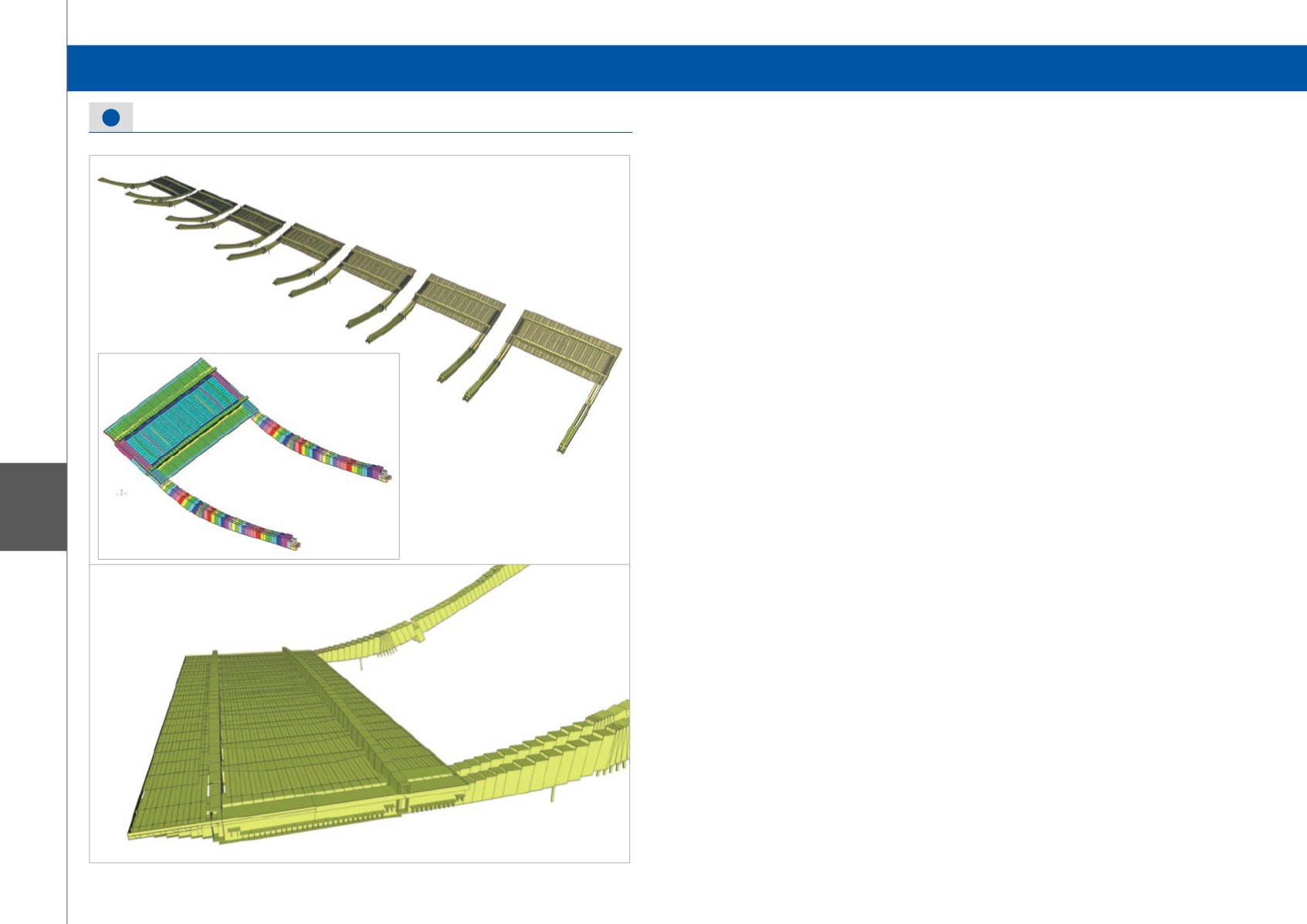
112
X2
Introduction
The movable road bridge at Brugge is built to cross over
the Brugge-Oostende channel. The new bridge replaces
an old movable metallic bridge of the “Vierendeel” type.
The bridge has the width of 19 m and is a rolling
bascule bridge with a movable pivot point. The
pivot point has a radius that rolls over the concrete
understructure. The bridge is powered by two jacks and
the rolling movement of the bridge occurs according to
the longitudinal axis of the bridge.
The weight of the bridge (725 tonnes) is balanced by
ballast that is positioned in two 15 m-high arms of the
bridge. The span of the bridge is 40 m and the bridge
has three traffic lanes with two separate lanes for
pedestrians and cyclists.
The bridge deck is transported in one piece to the site
together with the two arms. On the site the arms are
welded to the bridge deck and the bridge is ballasted.
Description of technical questions to be resolved
with Scia Engineer
Scia Engineer was used both for the dimensioning
of the bridge in the traffic situation and the erection
engineering of the bridge.
The complete 3D model was formed with bars, even
the orthotropic deck plate, divided into longitudinal and
cross girders with an equivalent stiffness and adopted
mass. Correct modellisation of the mass was very
important because of the balancing of the bridge.
From the engineering point of view this project has
several challenges.
First, there were the different states of the bridge to be
studied.
The possibility of creating different states of the
bridge in one model was a big advantage in terms of
calculation of the bridge. With the automatic steel code
check (EC) of Scia Engineer it was possible to check
all members in all states in one calculation model. This
gave an important gain in calculation / optimisation of
the structure in the different states.
Second, there was a second order calculation
needed for the check of the arms based on a stability
calculation.
Third, the use of graphical sections with different
material properties so as to model the exact weight of
the bridge into the different states of the bridge.
Fourth, the calculation of eigenvalues / frequencies
of the bridge in order to check if there were risks of
vibration under wind loads.
Fifth, for the erection engineering the different
construction stages had to be examined to determine
the right camber of the bridge so that the arms could be
welded correctly to the bridge deck on site.
Description of how our experience with
Scia Engineer proved its completeness
• Dimensioning a 3D structure in different states.
• The possibility of using and combining the results of
Scia Engineer in a flexible way.
• The use of graphical sections with different section
properties.
• Stability calculation and second order calculations.
• Calculation of eigenvalues.
This project proves the great diversity of Scia Engineer
in checking the structure and the use of materials.
Modules used:
• Base
• 3D frame
• Steel code check (EC)
• Stability
• Dynamics
Software: Scia Engineer
“Scheepsdalebrug” Movable Road Bridge - Brugge, Belgium
Nomination Category 2: Civil Structures
Nomination Category 2: Civil Structures


